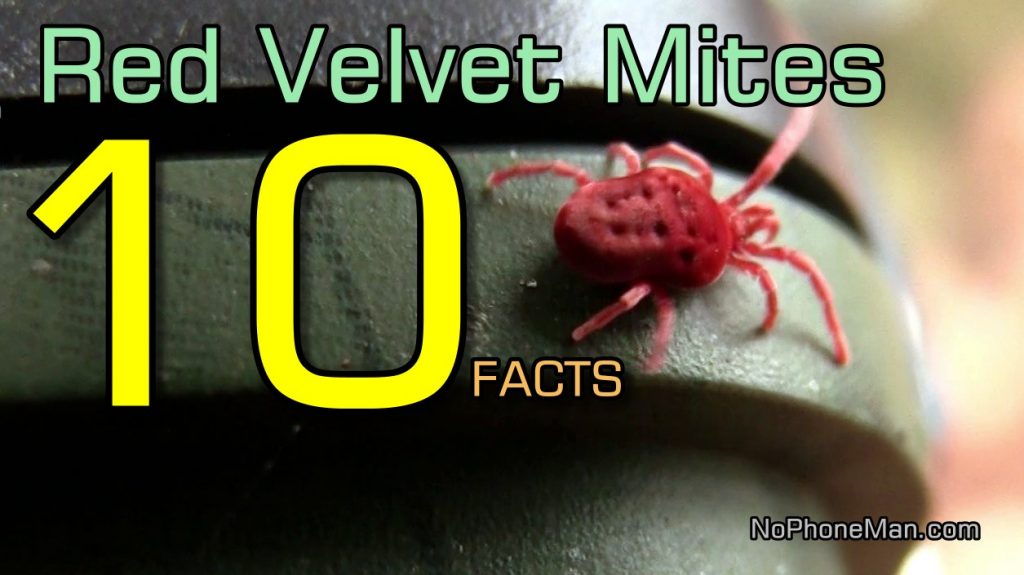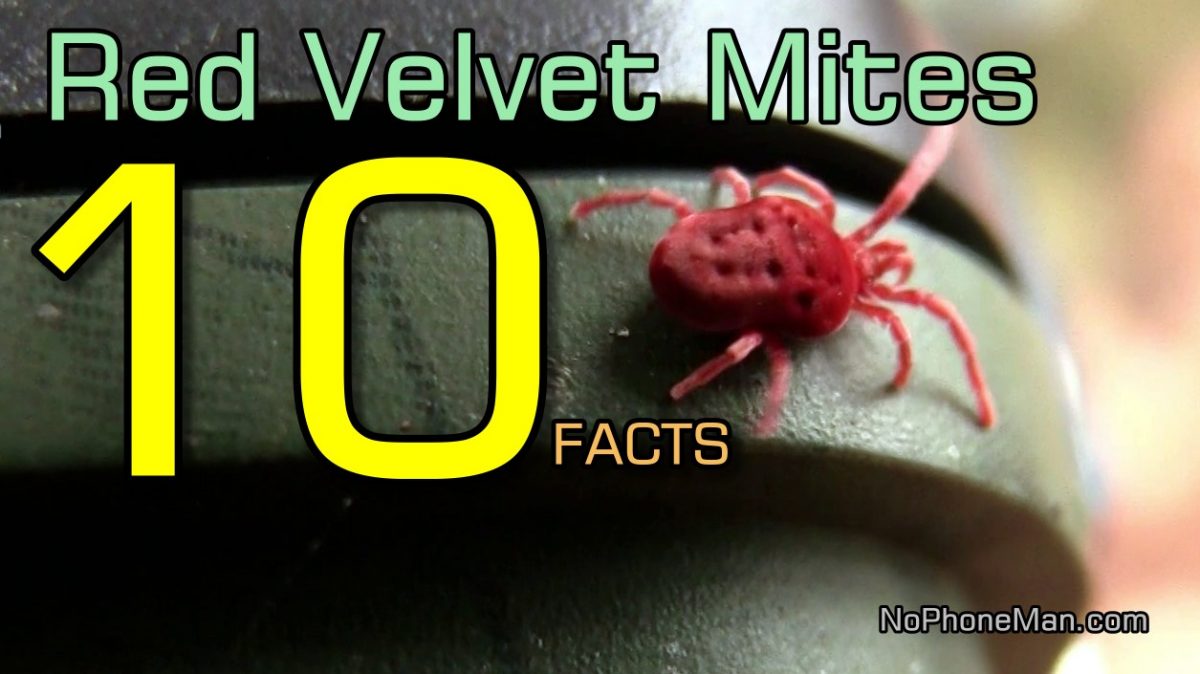
Here are 10 interesting facts about the Red Velvet Mites (Trombidium Holosericeum):
- Classification: Red Velvet Mites are arachnids. They belong to the class Arachnida, which includes spiders, scorpions, ticks, and of course… mites. Arachnids are characterized by having eight legs, two main body segments (cephalothorax and abdomen), and no antennae. Red Velvet Mites share these characteristics and are part of the diverse arachnid family.
- Appearance: The Red Velvet Mites are known for their striking appearance, with a bright red or orange velvety bodies that are covered in fine hairs. It’s these fine hairs that give the mites a velvety appearance. This distinctive coloration serves as a warning to potential predators, and sets them apart from many other mites. Red Velvet Mites, like other mites, do not possess antennae. Instead, they have specialized structures called sensory setae or sensilla that help them detect their environment. You can see the mite I filmed vigorously swinging his sensilla hither and thither to gather information about environment it’s in.
- Size: Despite their vivid appearance, these mites are quite small, typically ranging from 1 to 2 millimeters in length, but can grow as large as 5 millimeters. At that size, they are visible to the naked eye.
- Habitat: Red Velvet Mites live in various terrestrial habitats, such as grasslands, gardens, and forests. A keen observer can spot them crawling on the ground or on low vegetation, moss, leaf litter, or bare soil. And trail cameras, apparently.
- Diet: Red Velvet Mites are predators, and are particularly skilled at capturing and consuming small arthropods found in their habitat. They are known to be beneficial in controlling populations of certain pests, like aphids and harmful mites. They are active hunters and use their specialized mouthparts to pierce and suck the bodily fluids of their prey.
- Lifecycle: The life cycle of red velvet mites (Trombidium holosericeum) typically consists of several stages:
- Egg: The life cycle begins with the laying of eggs by adult female mites. These eggs are usually deposited in the soil or leaf litter.
- Larva: After an incubation period, the eggs hatch into larvae. The larvae are typically six-legged and are known as “seed ticks.” They are very small and actively search for prey to feed on.
- Nymph: Once the larvae have fed and grown, they molt into nymphs. Nymphs have eight legs and resemble miniature versions of adult mites. They continue to feed on small arthropods or insects.
- Adult: After further molting, the nymphs develop into adult red velvet mites. The adults have a distinct red or orange coloration and are larger in size. They are sexually mature and engage in mating to reproduce.
The exact duration of each stage can vary depending on environmental conditions, such as temperature and food availability. The life cycle of red velvet mites is generally completed within a few weeks to a few months, depending on the species and environmental factors.
- Temporary Parasites: The larvae of Red Velvet Mites are parasitic and often attach themselves to insects such as beetles, grasshoppers, or spiders as temporary ectoparasites. Ectoparasites are organisms that live on the exterior of their host’s body, as opposed to endoparasites that live inside the host’s body. And they are temporary because the parasitic relationship between the Red Velvet Mite larvae and their host is not a permanent one. While attached, they feed on the bodily fluids of their host. After feeding, they drop to the ground to continue their development. The host is not seriously harmed by their parasitism.
- Mating Rituals: Red Velvet Mites engage in intricate mating rituals. These can include the male tapping the female’s body with his legs, producing vibrations, and releasing pheromones to attract her. During courtship, the male may also engage in a dance-like display, where he moves in specific patterns around the female. This display is believed to be a way for the male to showcase his fitness and attractiveness to the female. And males may offer gifts to females as part of the mating process. This behavior, known as nuptial feeding, is observed in various species of mites and insects. The male presents a food item or a spermatophore (a package containing sperm) to the female as a form of courtship or to enhance his chances of successful mating. This behavior is believed to provide nutritional benefits to the female and increase her receptivity to mating. Mating typically occurs on the ground, and the female lays eggs in the soil.
- Distribution: This species of mite has a wide distribution and can be found in various parts of the world. They are known to occur in regions of Europe, Asia, North America, and Africa. Specifically, they have been reported in countries such as the United Kingdom, Germany, Russia, China, India, United States, Canada, and South Africa, among others. However, it’s important to note that their distribution may vary within these regions, as they are influenced by factors such as habitat suitability and availability of prey.
- Slow Movement: Despite having eight legs, Red Velvet Mites move slowly. They are not as agile as some other arachnids and are more commonly observed crawling along the ground.






Hello Mark, is there any way I can get in touch with you again? You no longer reply to your old BG email. Hope you are doing well btw. I too dream of living a life off the grid.
Hello, I apologize if I haven’t responded. Your email must have slipped under the radar. Hit me up again: bestgore [at] protonmail.ch